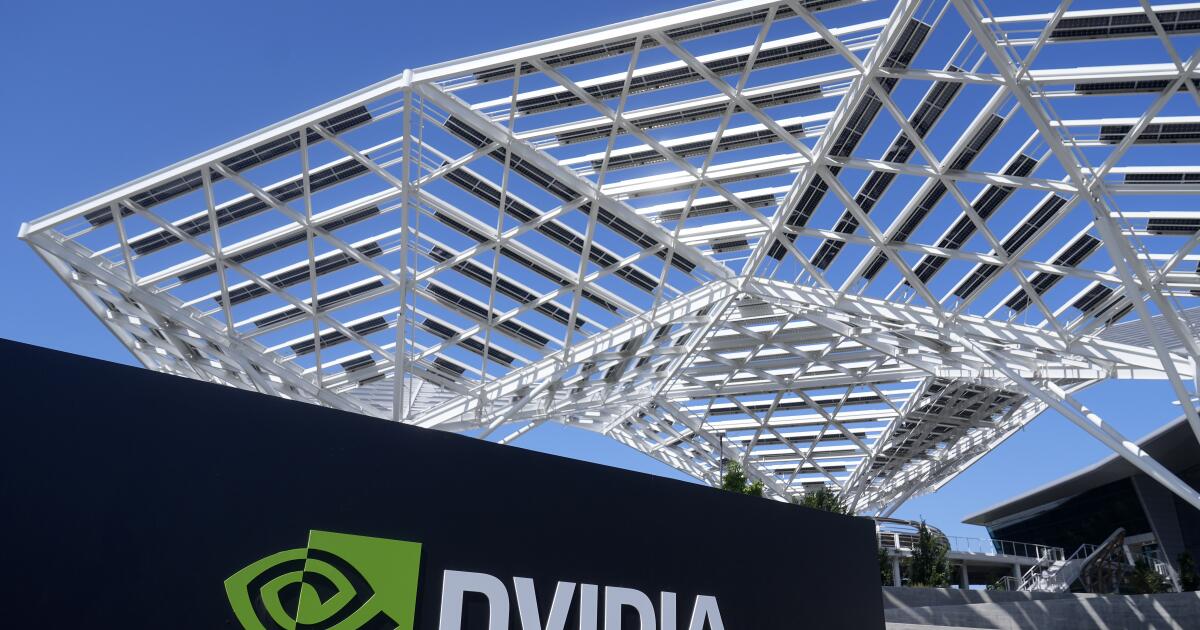Nvidia CEO Jensen Huang Just Delivered Spectacular News for Palantir Stock Investors
The artificial intelligence (AI) chip specialist just delivered proof positive that the AI revolution is alive and well.
The past couple of years have been something of a whirlwind for Palantir (PLTR -2.52%) stock investors. When the artificial intelligence (AI) revolution kicked off in late 2022, it played to the company’s strengths. With 20 years of data mining experience and AI expertise, Palantir quickly developed its Artificial Intelligence Platform (AIP), which has become the premier software system helping businesses make data-driven decisions. By integrating with existing business systems and layering generative AI on top, Palantir provides actionable insights in near real-time. Since the release of AIP in April 2023, Palantir has become a massive multibagger, with the stock soaring 1,760%.
However, the stock’s frothy valuation and questions about the ongoing adoption of AI have investors climbing a wall of worry, with many looking for signs that the AI revolution is on track.
Nvidia (NVDA -0.01%) has just provided the surest sign yet that the relentless adoption of AI is continuing.
Image source: Getty Images.
Enviable results
Despite facing tough triple-digit comps, Nvidia’s results were robust by any measure. During its fiscal 2026 second quarter (ended July 27), the company generated record revenue of $46.7 billion, up 56% year over year and 6% quarter over quarter. This drove adjusted earnings per share (EPS) of $1.05, which climbed 54% year over year.
For context, analysts’ consensus estimates were calling for revenue of $46.1 billion and EPS of $1.01, so Nvidia scaled both bars with room to spare.
A record-setting performance from the data center segment fueled the bullish results. The segment, which includes chips used for AI, data centers, and cloud computing, generated sales that surged 56% year over year to $41.1 billion, driven by the ongoing adoption of AI.
It’s important to note that export restrictions prevented the sale of H20 chips to China during the quarter, which weighed on the results. Those restrictions have since been rescinded, and Nvidia is working on a follow-up to the H20, based on its Blackwell architecture — reportedly dubbed the B30A. The company is in talks with the U.S. government to determine the limitations of the new data center chip for customers in China.
The icing on the cake was a new record-setting stock buyback plan. Nvidia announced a $60 billion share repurchase authorization, in addition to the $14.7 billion remaining on its previous buyback plan. Share repurchases are generally a sign of management’s confidence that the company’s stock is undervalued.
What does this all have to do with Palantir?
Beyond the good news for Nvidia investors, the results have broader implications about what’s happening across the AI landscape. Nvidia has long been the bellwether for AI adoption, and despite the market’s tepid response to its report, the results help put things into perspective.
While Nvidia’s 56% growth is impressive by any measure, it comes on top of 122% growth in the prior-year quarter. This helps to illustrate the continuing demand for AI infrastructure as more companies adopt this groundbreaking technology.
It also gives additional weight to Palantir’s equally robust results released earlier this month. In the second quarter, revenue surged 48% year over year (and 14% quarter over quarter) to $1 billion. This powered adjusted earnings per share (EPS) of $0.16, which surged 78% year over year.
Yet the overall results mask the truly phenomenal performance by the company’s U.S. commercial segment, which includes AIP. Revenue for the segment soared 93% year over year to $306 million, while its customer rolls increased 64%, fueled by record demand for AIP. Future demand looks even brighter as the segment’s total contract value soared 222% to $843 million. Even more impressive is Palantir’s remaining performance obligation (RPO), or contractually obligated sales that aren’t yet included in revenue, which soared 77% year over year to $2.42 billion.
The fact that Nvidia’s industry-leading graphics processing units (GPUs) continue to sell like hotcakes shows the ongoing momentum of AI adoption, which bodes well for Palantir.
The biggest AI-centric problem facing most business leaders is the lack of expertise required to implement AI into their operations, while ensuring a reasonable return on their investment. Palantir’s quarterly reports are rife with customer testimonials that detail just that.
For example, after deploying AIP, Cleveland Clinic reported a 38-minute decrease in emergency room wait times, a 40% reduction in unused orthopedic operating room time, and a 75% reduction in time spent calculating bed capacity. That’s one of dozens of AIP success stories.
To be clear, there’s still the matter of Palantir’s valuation to consider. The stock is currently trading for 185 times next year’s expected earnings. While that’s an egregious valuation to be sure, it might seem like a bargain five to 10 years down the road. CEO Alex Karp recently revealed ambitious plans to 10X revenue in the coming years. Given the company’s current growth rate, it could achieve that lofty benchmark at some point over the next decade.
For investors wanting in on the action but put off by Palantir’s exorbitant earnings multiple, I’d suggest establishing a small position and using dollar-cost averaging to build out a stake.


